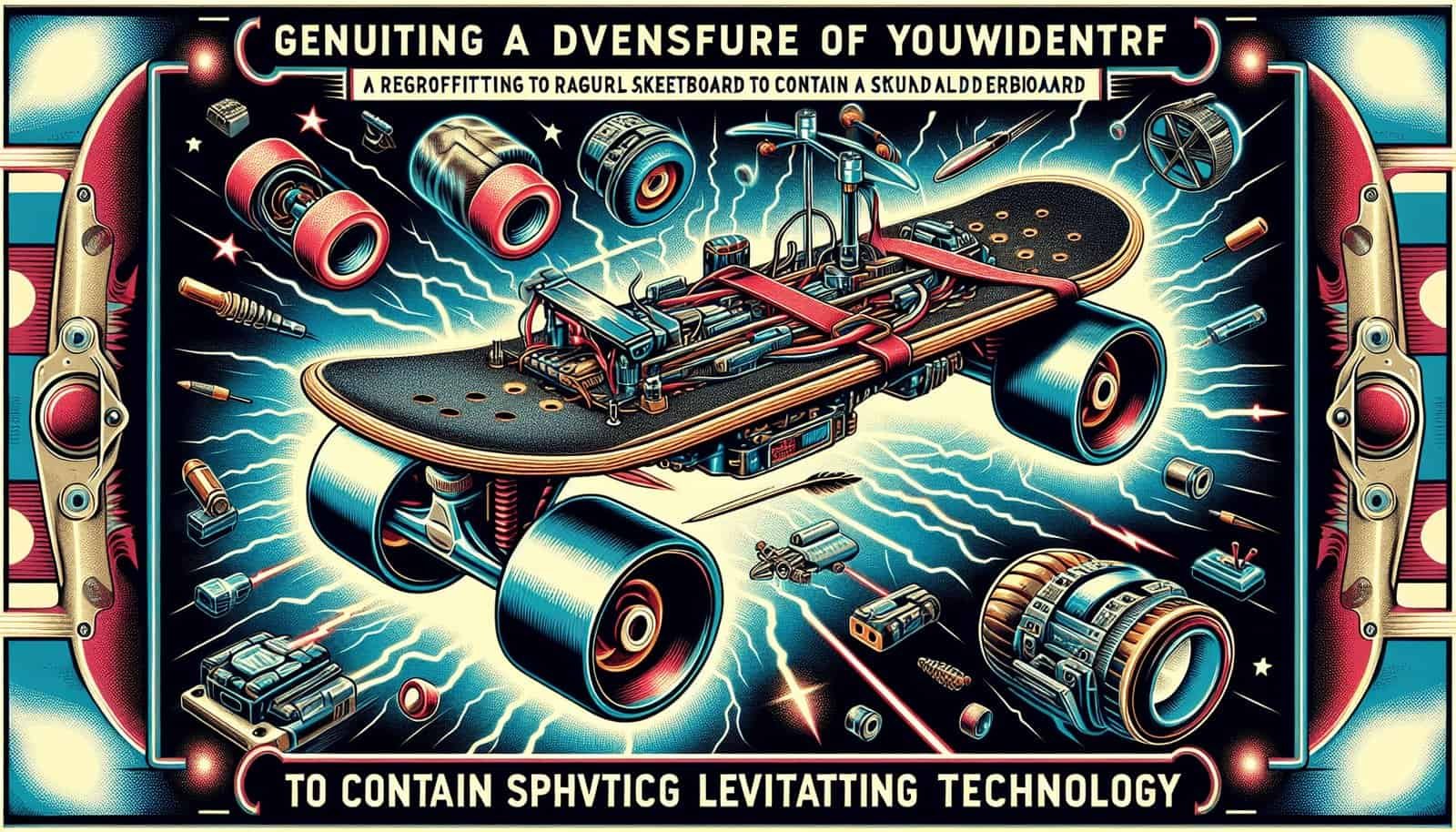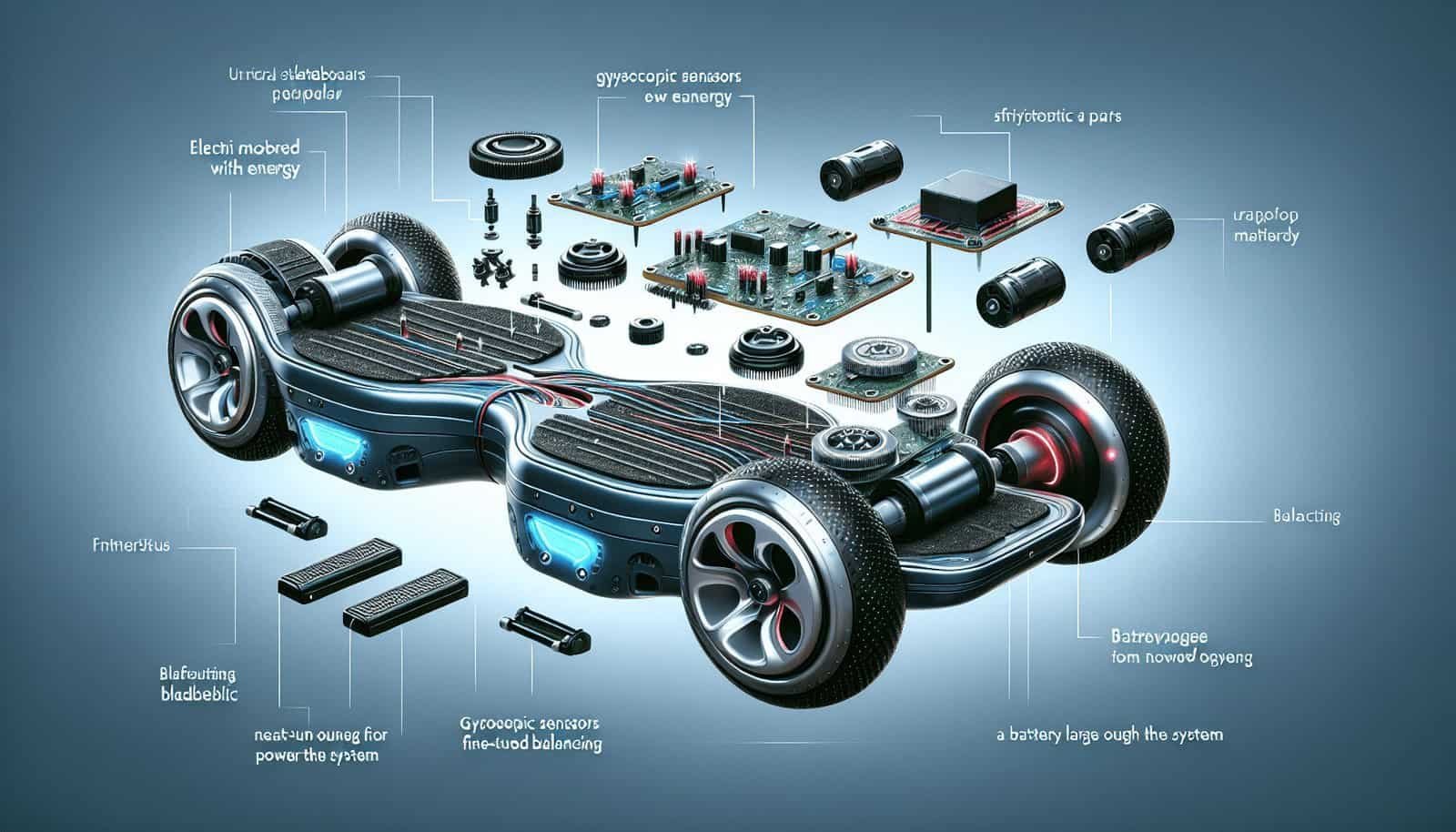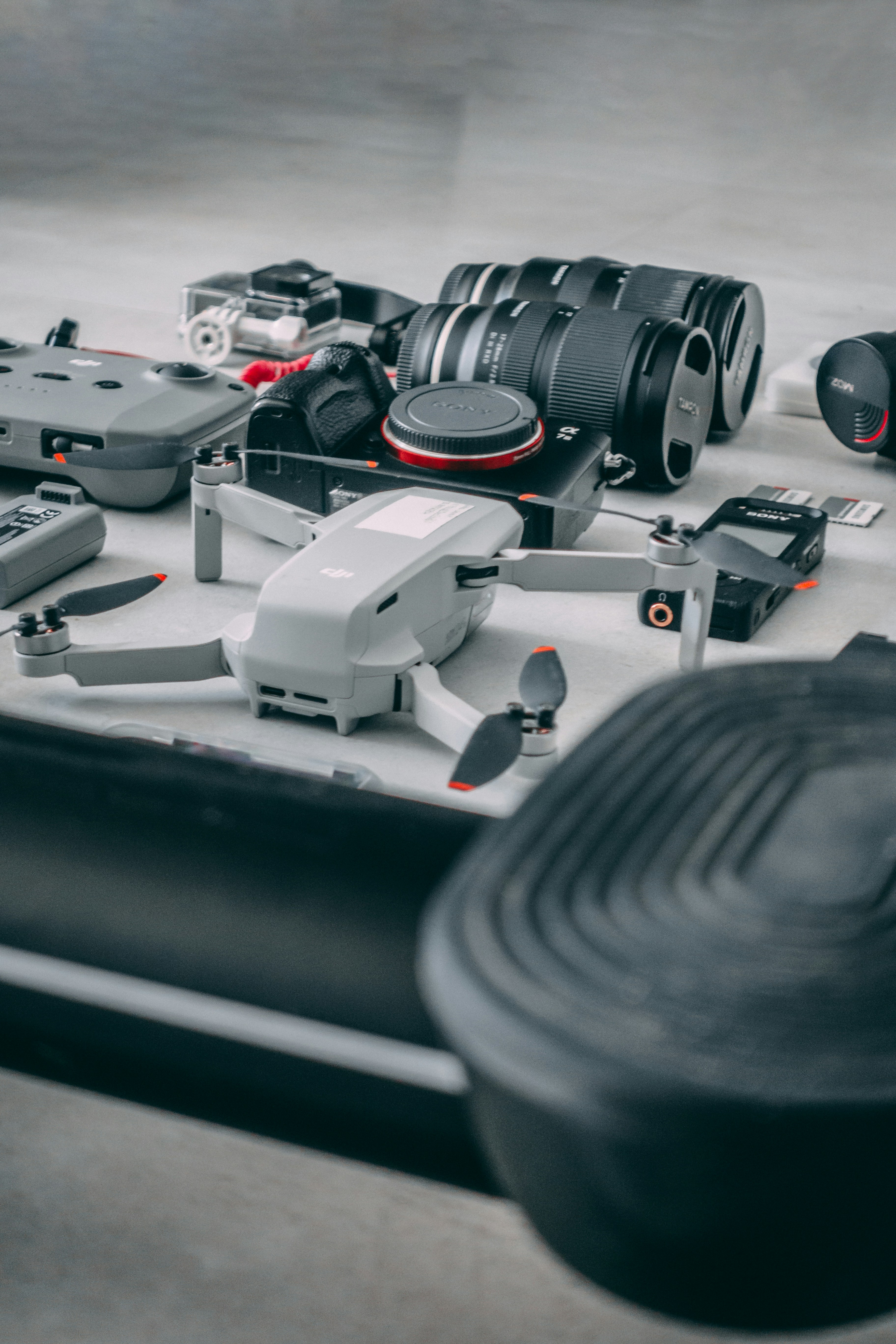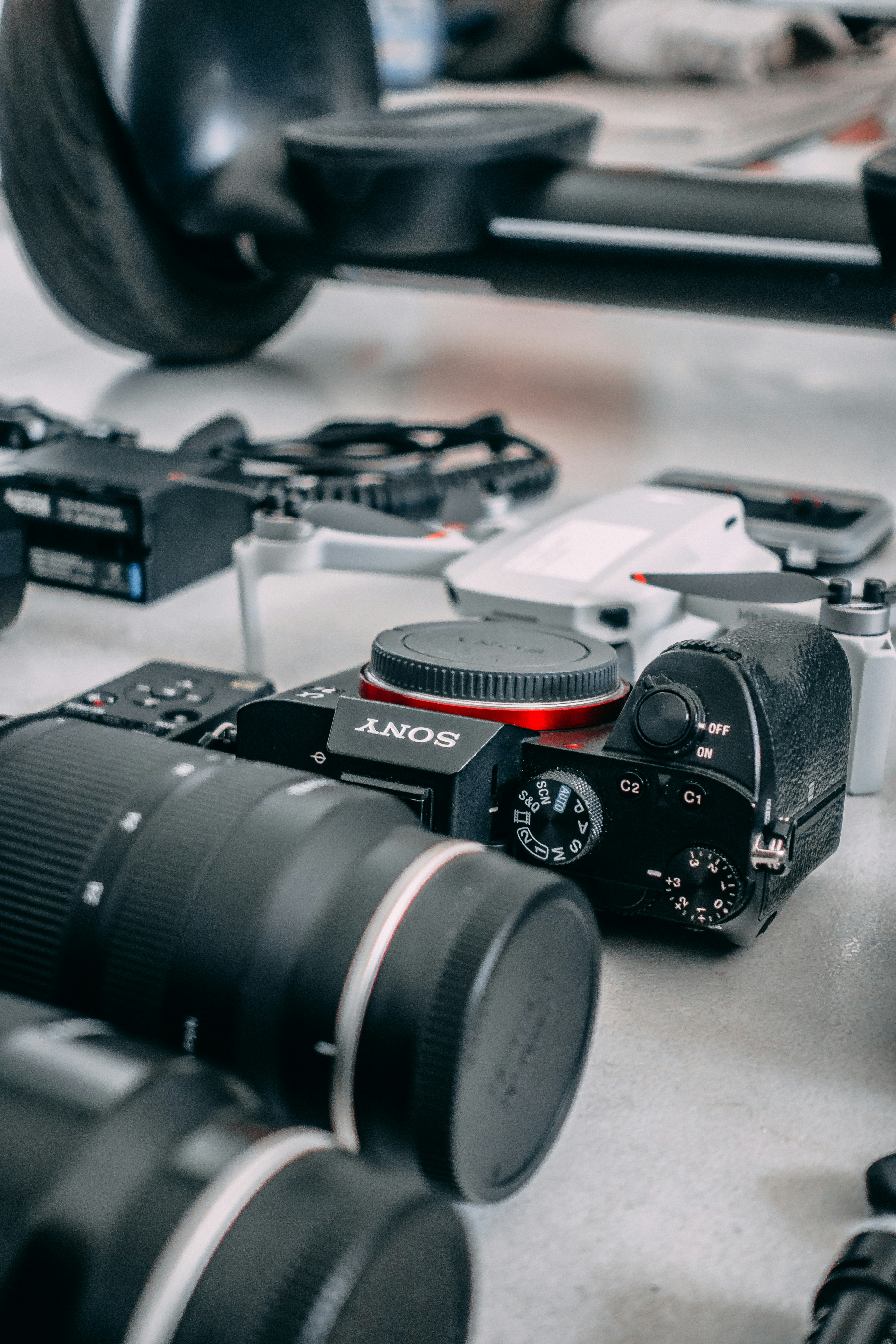Have you ever wondered if it’s possible to transform your regular skateboard into a futuristic hoverboard? Well, in this article, we’ll explore the question that’s been on the minds of many skating enthusiasts: Can you retrofit your regular skateboard to make it a hoverboard? We’ll uncover the possibilities, potential challenges, and the exciting technologies that could potentially bring us closer to experiencing the thrill of hovering above the ground on a skateboard. So, get ready to strap on your helmet and join us as we venture into the world of hoverboard innovation!
Understanding the Concept of Hoverboards
What is a hoverboard?
A hoverboard refers to a self-balancing, electrically powered personal transportation device that has gained significant popularity in recent years. Despite its name, a hoverboard does not actually hover above the ground like the ones depicted in science fiction movies. Instead, it consists of a platform with two wheels on which the rider stands and moves by shifting their weight.
How do hoverboards work?
Hoverboards utilize a combination of components and mechanics to provide self-balancing capabilities and propulsion. Electric motors, gyroscopic sensors, a battery, and a control system work together to allow the rider to control the movement and direction of the hoverboard.
Can a regular skateboard be converted into a hoverboard?
The idea of converting a regular skateboard into a hoverboard might sound appealing to some enthusiasts. However, it is important to note that the retrofitting process can be complex and challenging. Several factors, such as the lack of hoverboard-specific components, limited space for installation, weight and balance issues, and safety concerns, make the conversion process difficult. It is crucial to thoroughly understand the components and mechanics of a hoverboard before attempting to retrofit a regular skateboard.
Components and Mechanics of a Hoverboard
Electric motors
The core propulsion system of a hoverboard is its electric motors. These motors are responsible for generating the necessary power to move the wheels and provide locomotion. Most modern hoverboards utilize brushless electric motors that offer higher efficiency and reduced maintenance compared to traditional brushed motors.
Gyroscopic sensors
To maintain stability and enable self-balancing, gyroscopic sensors play a vital role in hoverboards. These sensors detect changes in the rider’s weight distribution and adjust the speed and direction of the electric motors accordingly. By continually monitoring the rider’s movements, gyroscopic sensors contribute to the intuitive and seamless riding experience associated with hoverboards.
Battery and power source
Hoverboards rely on batteries as a power source. Lithium-ion batteries are commonly used due to their high energy density and ability to sustain the necessary power output. The battery capacity directly affects the hoverboard’s range and runtime, and it is important to consider the battery life and charging time when retrofitting a regular skateboard.
Self-balancing technology
One of the key features of hoverboards is their self-balancing capability. This technology relies on a combination of gyroscopic sensors and control algorithms to automatically adjust the electric motors’ speed and torque. By continuously analyzing the rider’s weight distribution and making real-time adjustments, self-balancing technology ensures a stable and safe riding experience.
Built-in control system
Hoverboards are equipped with a built-in control system that acts as the brain of the device. This system processes inputs from the gyroscopic sensors and translates them into commands for the electric motors. The control system also allows the rider to control the speed and direction of the hoverboard through intuitive movements and gestures.
Challenges in Retrofitting a Regular Skateboard
Lack of hoverboard-specific components
One of the major challenges in retrofitting a regular skateboard into a hoverboard is the lack of hoverboard-specific components. Hoverboards have specialized motors, batteries, and control systems that are not readily available for regular skateboards. Obtaining compatible components or modifying existing ones can be a difficult task.
Limited space for components
Regular skateboards have a limited amount of available space for installing the necessary components of a hoverboard. The compact design of hoverboards requires careful planning and modification of the skateboard to accommodate the electric motors, sensors, battery, and control system. Proper space management is crucial to ensure functionality and avoid any safety risks.
Weight and balance issues
Retrofitting a regular skateboard into a hoverboard may result in weight and balance issues. Hoverboards are designed with a specific weight distribution to ensure stability and maneuverability. Adding components to a skateboard may alter its weight distribution, negatively impacting the overall balance of the device.
Safety concerns
Safety is a significant concern when retrofitting a regular skateboard into a hoverboard. The modification process requires expertise and knowledge of electrical systems, as well as proper understanding of safety protocols. Any mistakes in wiring or installation can lead to potential hazards, such as electrical malfunctions or accidents while riding.
Potential Modifications to Turn a Skateboard into a Hoverboard
Adding electric motors
To convert a skateboard into a hoverboard, the addition of electric motors is a crucial modification. These motors should be powerful enough to provide sufficient propulsion and torque for the wheels. Ensuring compatibility with the skateboard’s structure and incorporating safety features in motor installation is essential.
Implementing weight and balance systems
Creating a self-balancing capability is a key aspect of a hoverboard. To achieve this, weight and balance systems need to be incorporated into the skateboard. Counterweights, adjustable brackets, or mechanisms that automatically adjust the weight distribution can help replicate the self-balancing feature of a hoverboard.
Incorporating gyroscopic sensors
Adding gyroscopic sensors to a skateboard is essential for maintaining stability and enabling self-balancing. These sensors detect the rider’s movements and feed that information to the control system, allowing for real-time adjustments in motor speed and direction. Proper calibration and integration of the gyroscopic sensors are vital for achieving the desired functionality.
Installing a control system
To control the movement and speed of the modified skateboard, a control system needs to be installed. This system should interpret inputs from the rider and modify the electric motor outputs accordingly. The control system should be robust, reliable, and capable of handling the demands of a hoverboard.
Integration of a power source
Another critical modification involves integrating a power source into the skateboard. This can be achieved by adding a battery pack and ensuring proper electrical connections with the other components. The power source should provide sufficient energy to drive the electric motors and sustain the desired range of the hoverboard during operation.
Expert Opinions on Retrofitting Skateboards
Advantages and disadvantages
Experts have varying opinions on retrofitting regular skateboards into hoverboards. Some believe that retrofitting can be a cost-effective way to experience the thrill of riding a hoverboard without purchasing a dedicated device. Others argue that the challenges involved in the retrofitting process, such as technical complexities and safety concerns, outweigh the benefits.
Feasibility and technical challenges
Experts agree that retrofitting a skateboard into a hoverboard presents numerous technical challenges. The lack of readily available hoverboard-specific components and the need for precise modifications pose difficulties for enthusiasts attempting the retrofitting process. The technical complexity of integrating the various components and ensuring their proper functioning adds to the feasibility concerns.
Skills and knowledge required
To successfully retrofit a skateboard into a hoverboard, a certain level of skills and knowledge is required. Understanding electrical systems, wiring, and safety protocols is critical to avoid potential hazards. Expertise in mechanical modifications and component integration is also necessary for achieving the desired functionality.
Safety implications
Experts strongly emphasize the importance of safety when considering retrofitting a regular skateboard into a hoverboard. A reputable expert advises that individuals without proper knowledge and expertise should refrain from attempting the retrofitting process, as it can lead to safety hazards, including electrical malfunctions, instability, or accidents while riding.
Legal and Safety Considerations
Local regulations on electric skateboards
Before attempting to retrofit a regular skateboard into a hoverboard, it is essential to research and understand local regulations and laws regarding electric skateboards. Some regions have restrictions or specific requirements for the use of motorized personal vehicles, which may affect the legality of operating a modified skateboard.
Certifications and standards
Hoverboards and electric skateboards are subject to various certifications and standards, ensuring their safety and compliance with industry norms. Retrofitting a regular skateboard into a hoverboard may risk non-compliance with these certifications and standards, potentially compromising safety and legal obligations.
Risk assessment and mitigation
Individuals attempting to retrofit a regular skateboard into a hoverboard must conduct a thorough risk assessment. Identifying potential hazards, evaluating the safety of modifications, and implementing appropriate mitigation measures are crucial to ensure a safe and enjoyable riding experience.
Protective gear and safety precautions
Regardless of whether a regular skateboard is retrofitted into a hoverboard or a commercially available hoverboard is used, it is imperative to prioritize safety. Wearing proper protective gear, such as helmets, knee pads, and elbow pads, significantly reduces the risk of injuries. Additionally, following safety guidelines, such as riding in designated areas and within recommended speed limits, promotes a safe riding culture.

Step-by-step Guide: Retrofitting Process
Assessing the skateboard
Before starting the retrofitting process, it is necessary to assess the condition and suitability of the skateboard. This involves examining the structure, weight, and balance of the skateboard to identify any potential limitations or modifications required.
Choosing the appropriate components
Researching and selecting the right components is crucial for the success of the retrofitting process. This includes identifying electric motors, gyroscopic sensors, a battery, a control system, and other necessary parts that are compatible with the skateboard’s structure and intended functionality.
Modifying the skateboard for installation
Once the components are selected, the skateboard may need modifications to accommodate the additional hardware. This may involve drilling holes for mounting, reinforcing the structure, or making adjustments to create space for the components without sacrificing the skateboard’s integrity.
Wiring and electrical connections
The proper wiring and electrical connections are vital to ensure the functionality and safety of the retrofit. Following wiring diagrams provided by the component manufacturers helps in ensuring the correct installation and connection of the various electrical components.
Testing and troubleshooting
After the installation and wiring process is complete, thorough testing must be conducted to check the functionality of the retrofit. This includes testing the motor response, self-balancing feature, control system, and overall stability of the modified skateboard. Any issues or malfunctions discovered during testing should be addressed and troubleshooted accordingly.
Alternatives to Retrofitting
Purchasing a commercially available hoverboard
For those who are not keen on the retrofitting process or lack the necessary skills and knowledge, purchasing a commercially available hoverboard is a straightforward option. These hoverboards come with all the required components and safety standards, ensuring a hassle-free and safe riding experience.
Exploring other electric skateboard options
If the desire for an electric-powered skateboard experience remains strong, exploring other electric skateboard options can be a viable alternative. There are various models available on the market, ranging from single-wheel electric skateboards to traditional skateboard designs equipped with electric motors and batteries.
Customizing your skateboard with additional features
For individuals looking to enhance their regular skateboarding experience, customizing the skateboard with additional features is a creative alternative. Accessories such as LED lights, Bluetooth speakers, or specialized wheels can add a personalized touch to the skateboard without requiring extensive modifications.
Cost Analysis of Retrofitting vs. Purchasing
Estimated cost of retrofitting
The cost of retrofitting a regular skateboard into a hoverboard can vary significantly depending on the chosen components and the complexity of the modifications required. The cost may include expenses for electric motors, gyroscopic sensors, a battery, a control system, necessary wiring, and any other components specific to the retrofit. It is advisable to research and compare prices from different suppliers to estimate the overall cost accurately.
Comparative cost of purchasing a hoverboard
When considering the cost analysis, it is essential to compare the expenses of retrofitting with the cost of purchasing a commercially available hoverboard. The price of hoverboards can vary depending on the brand, additional features, and quality of the components. It is recommended to research and read reviews to find a hoverboard that fits both the desired functionality and budget.
Long-term maintenance and repair expenses
In addition to the initial cost, long-term maintenance and repair expenses should be taken into account. Like any electronic device, hoverboards require regular maintenance and occasional repairs. It is crucial to factor in these expenses to assess the overall cost of ownership and determine the most cost-effective option for personal preferences.
Conclusion
Feasibility and limitations of retrofitting a regular skateboard into a hoverboard must be carefully considered before embarking on such a project. The process involves a series of modifications, including the addition of electric motors, gyroscopic sensors, a control system, a battery, and ensuring proper wiring and balance adjustments. However, challenges such as the lack of hoverboard-specific components, limited space, balance concerns, and safety risks make retrofitting complex.
Experts hold differing opinions on the advantages and disadvantages of retrofitting, and the technical complexities and safety implications associated with the process should not be underestimated. Local regulations, certifications, and safety precautions should always be considered to ensure legal compliance and personal safety.
While retrofitting may be appealing to some enthusiasts, purchasing a commercially available hoverboard or exploring other electric skateboard options are viable alternatives. Additionally, customizing a regular skateboard with accessories offers an opportunity for personalization without the complexities of retrofitting.
Ultimately, the decision to retrofit a regular skateboard into a hoverboard or explore other alternatives depends on personal choice, preferences, safety considerations, and the willingness to invest time and effort into the project.




